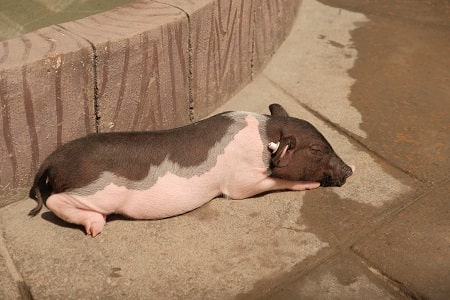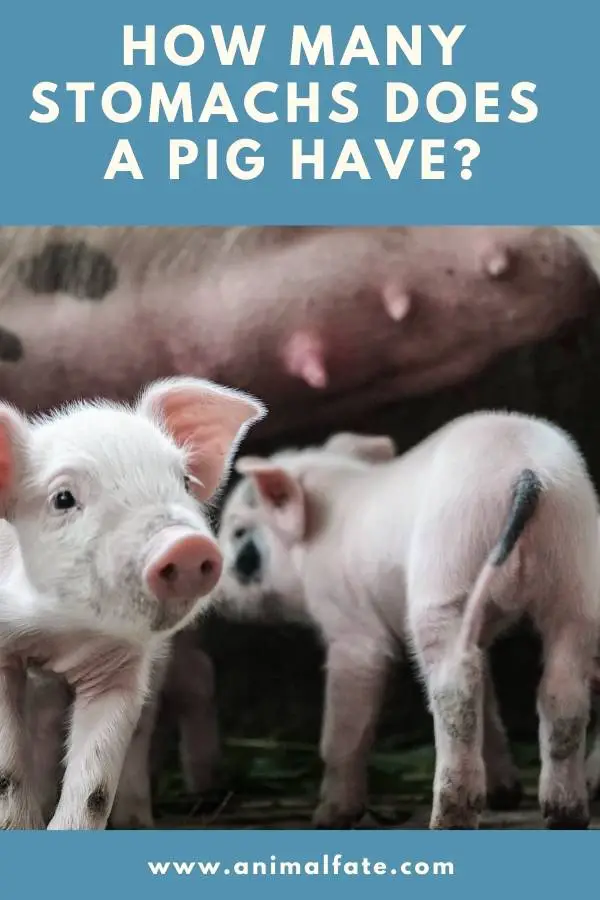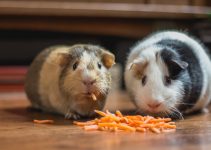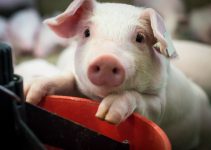Pigs have only one stomach because they are monogastric animals. It can be a little confusing because cattle have four stomachs, so people might think that even pigs have four stomachs, but that’s not true. But what is true is that pigs are omnivores, which means they eat both plant and animal origin foods.
Many people know pigs for their consumption capacity and their speedy growth. For this reason, they think these animals have quite a unique digestive system.
But what exactly is their digestive system, and how does it work?
Let’s get into it more!
Contents
How is the pig’s digestive system similar to humans?
A pig’s digestive system is similar to that of a human’s in the number of the stomach and how it processes food intake.
Other livestock such as cattle, sheep, and goats have four stomachs, while pigs and humans only have one.
The term for having a single stomach is monogastric. Pigs are also monogastric, like humans and other animals such as cats and dogs.
Since both pigs and humans have a similar digestive system, the process is also the same.
These animals also chew the food they eat, down it through the esophagus, store and break it down in the stomach. The final digestion also happens in the intestine. Lastly, the wastes get released in the anus.
Since both have a similar process, they also have the same digestive problems.
For instance, significant problems in the stomach come with inflammation of the lining. We call this gastritis, which may induce vomiting.
Related – How to stop a pig from squealing?
What does the stomach do in a pig?
Like any other stomach, its function on a pig is to store food, breakdown its nutrients, and separate waste.
While every part of the body is vital, the stomach plays a significant role in a pig’s growth.
These animals grow fast, and their appetite goes up as they mature.
On average, a hog can eat 6 to 8 lbs in a day. As soon as they finish weaning, the appetite starts to get bigger.
For this reason, their stomach is the key to storing and breaking down the nutrients from the food they eat.
At the same time, their stomach also plays a role in its growth.
Unlike other livestock, which has four stomachs, hogs only have one. Thus, they are not capable of munching too much grass, even hay.
Most animals that have more than one digestive chamber are herbivores. With multiple stomachs, they become capable of digesting hard and coarse food.
Since hogs only have one stomach like us, they can only eat foods that are soft and easy to digest.
You May Also Read – What does it mean when a pig nudges you?
How many chambers does a pig’s stomach have?

Pigs only have a simple, single-chambered stomach, same with humans and other animals.
For some animals, they have three more additional chambers. These are cattle, sheep, and goats. Since they eat grass and hay most of the time, they need multiple compartments to digest these foods well.
Birds have an additional stomach, making it two in their bodies. The first one functions like a pig’s stomach, while the other is the muscular stomach, or what we call gizzard.
What does it mean when a pig wags its tail? Read more here.
How big is a pig’s stomach?
Adult pigs have a stomach that takes up 0.6% of their total weight. Thus, a hog weighing 400 pounds has a 2.4-pound stomach.
When it comes to storage capacity, it varies depending on the age of the animal.
For instance, newborn piglets can take up only 30 ml in its stomach. For adult ones, they can take 3.5 liters to 5 liters depending on their size.
Thus, many hog raisers suggest feeding only twice a day. Offering too much feed may put it to waste. The reason is that these animals tend to play and trample on food when they’re full.
Do pigs digest their food?
Pigs do digest their food like any other animals. Since these animals are fast-eaters, you may wonder if they ever digest what they eat.
These animals like to eat soft and easy-to-eat food. They may have healthy teeth to endure hard food like raw crops. Nevertheless, they prefer food which doesn’t need much chewing.
As a result, many people tend to mix the feed with water, which helps these hogs eat bigger.
Although they prefer to chew less, it doesn’t mean they don’t digest their food.
Their stomach compensates for that barely-chewed food. For this reason, it’s best to maintain a healthy digestive system.
Try offering fiber-rich food like hay and wheat as treats mixed into their meals.
Fiber will help maintain a healthy stomach for their digestion.
How to make a show pig gain weight fast? Learn how!
Do pigs have 3 stomachs?
It’s a common myth that pigs have three stomachs. However, that’s not exactly true.
These animals have a similar digestive system to us, having only a single stomach.
However, some animals have three stomachs, and we call them camelids. The list of camelid animals includes llamas, alpacas, and camels.
Other animals have even more than three. We call these animals ruminant, and they are cattle, sheep, goats, buffalo, and deer.
Pig digestive system diagram
A pig’s digestive system diagram is similar to that of humans, which is a monogastric one.
In this system, the food these animals eat gets chewed first in the mouth.
The chewed food then gets swallowed, passing through the esophagus, towards the stomach.
In the stomach, the breaking down of nutrients from the food gets initiated. It gets mixed up with gastric acids to process the nutrients.
It’s in the small intestine where these nutrients get extracted and absorbed.
The waste is then removed through the large intestines, secreting it through the anus.
These animals only have a single stomach. Thus, the digestive structure is not meant for digesting fiber-rich food like hay.
Thus, pigs can hardly digest it, and if given, it should only be in small amounts.
Summary
Pigs only have one stomach, and it works the same as that of humans and other carnivores and omnivores.
Contrary to the belief that pigs have three stomachs, they only have a single one. This available stomach functions to digest simple food.
The stomach plays a vital role in the growth and overall health of these animals. Thus, it’s crucial to maintain it to achieve healthy growth.
Resources
Image credits – Photos by Kameron Kincade and Jiayu Chan on Unsplash



